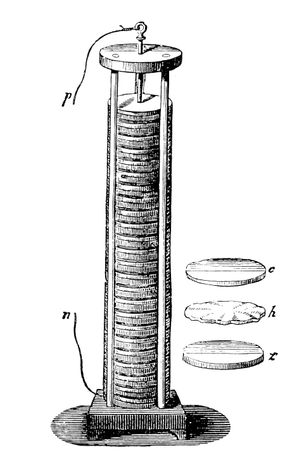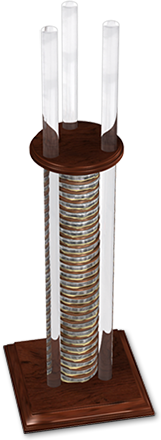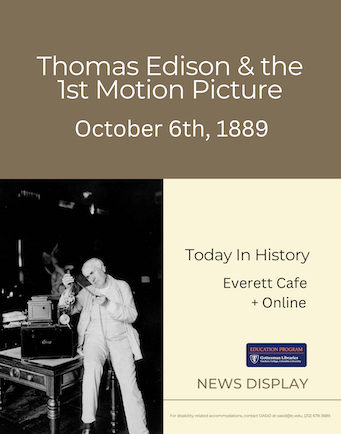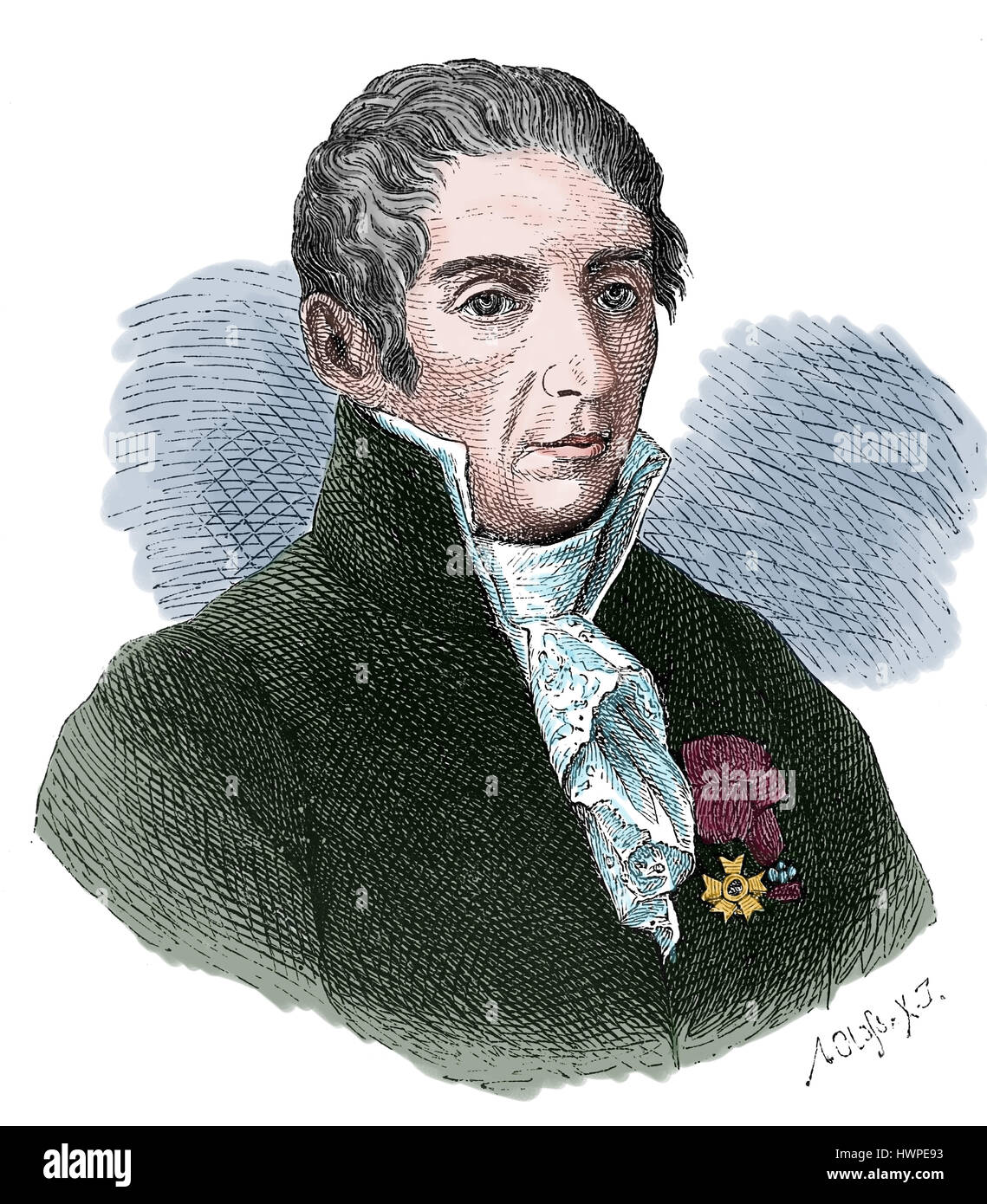Alessandro Volta: The Pioneer of Electrical Science
Introduction
Alessandro Volta, an Italian physicist and chemist, is one of the most influential figures in the history of science. Born in 1745, Volta's groundbreaking work in electricity laid the foundation for modern electrical engineering and technology. His invention of the electric battery, known as the Voltaic Pile, revolutionized the way scientists understood and harnessed electrical energy. This article explores Volta's life, his contributions to science, and the lasting impact of his discoveries.
Early Life and Education
Alessandro Giuseppe Antonio Anastasio Volta was born on February 18, 1745, in Como, a town in the Duchy of Milan (now part of Italy). Coming from a noble family, Volta demonstrated an early fascination with natural phenomena, particularly electricity. Despite his family's wishes for him to pursue a legal career, Volta's passion for science led him to study physics and chemistry independently. By the age of 18, he was already corresponding with prominent scientists of his time, sharing his observations and experiments.
Volta's formal education began at the local Jesuit school, but he soon abandoned the traditional path to focus on his scientific pursuits. His early experiments involved studying static electricity and the properties of gases. In 1774, he was appointed as a professor of physics at the Royal School in Como, where he began his systematic investigations into electricity.
Early Scientific Contributions
Volta's first significant contribution to science was the invention of the electrophorus in 1775. This device, capable of generating static electricity, was a breakthrough in the study of electrical phenomena. The electrophorus consisted of a dielectric plate and a metal plate with an insulating handle. By rubbing the dielectric plate and then placing the metal plate on top, Volta demonstrated how static electricity could be stored and transferred.
In 1776, Volta turned his attention to chemistry, particularly the study of gases. He discovered methane (then called "inflammable air") by collecting gas released from marshes. His experiments with gases earned him recognition from the scientific community, and he was elected as a fellow of the Royal Society of London in 1791.
The Controversy with Luigi Galvani
One of the most famous episodes in Volta's career was his disagreement with fellow Italian scientist Luigi Galvani. In the late 1780s, Galvani observed that frog legs twitched when touched with two different metals, leading him to propose the theory of "animal electricity." Galvani believed that living tissues generated electricity intrinsically.
Volta, however, was skeptical of this idea. He hypothesized that the electricity observed by Galvani was not produced by the frog's tissues but was instead generated by the contact between the two dissimilar metals. To test his theory, Volta conducted a series of experiments, eventually concluding that the metals alone could produce electricity without any biological material. This disagreement sparked a heated debate in the scientific community and motivated Volta to develop his most famous invention: the Voltaic Pile.
The Invention of the Voltaic Pile
In 1800, after years of experimentation, Volta announced his invention of the Voltaic Pile, the first true battery capable of producing a steady electric current. The device consisted of alternating discs of zinc and copper separated by pieces of cardboard soaked in brine (saltwater). When connected in a circuit, the pile produced a continuous flow of electricity, proving that chemical reactions could generate electrical energy.
The Voltaic Pile was a monumental achievement for several reasons. First, it provided a reliable source of electricity, enabling further experiments in electrochemistry and electromagnetism. Second, it debunked the theory of animal electricity, establishing that electricity could be produced purely through chemical means. Finally, it paved the way for future advancements, such as the development of more efficient batteries and the exploration of electric circuits.
Recognition and Legacy
Volta's invention earned him widespread acclaim. In 1801, he was invited to Paris by Napoleon Bonaparte, who awarded him a gold medal and made him a count. The unit of electrical potential, the volt (V), was named in his honor, cementing his place in scientific history. Volta continued to conduct research and publish papers until his retirement in 1819. He passed away on March 5, 1827, in Como, leaving behind a legacy that would shape the future of science and technology.
Volta's contributions extended beyond the Voltaic Pile. His work on capacitance, voltage, and electrical resistance provided essential insights into the nature of electricity. He also made advancements in meteorology, developing devices to measure atmospheric electricity. His interdisciplinary approach exemplified the spirit of the Enlightenment, where curiosity and experimentation drove scientific progress.
Conclusion of Part One
Alessandro Volta's early life and revolutionary inventions laid the groundwork for modern electrical science. From his humble beginnings in Como to his rise as a celebrated scientist, Volta's story is one of perseverance, innovation, and intellectual brilliance. In the next part of this article, we will delve deeper into the technical aspects of the Voltaic Pile, its impact on contemporary science, and how Volta's work influenced future generations of inventors and researchers.
The Science Behind the Voltaic Pile
Alessandro Volta's Voltaic Pile was far more than just an experimental gadget – it represented a fundamental shift in the understanding of electricity. Unlike earlier devices like the Leyden jar, which stored static electricity, the Voltaic Pile generated a continuous electric current through chemical reactions. The alternating layers of zinc and copper acted as electrodes, while the brine-soaked cardboard served as an electrolyte, facilitating ion exchange. This elegant design exploited the principle of redox (reduction-oxidation) reactions, where zinc atoms oxidized (lost electrons), and copper ions reduced (gained electrons), creating a directional flow of electrons.
Volta initially called his invention the "artificial electric organ," drawing parallels to Galvani’s frog experiments. However, the Voltaic Pile worked independently of biological material, validating Volta’s argument against animal electricity. Scientists soon replicated his design, confirming its reliability. The pile typically produced around 0.76 volts per cell, and stacking multiple cells in series increased the voltage – a principle still used in modern batteries. This scalability made the Voltaic Pile indispensable for laboratory experiments.
Immediate Impact on Scientific Research
The invention sparked a flurry of discoveries. Within months of Volta’s 1800 announcement, English scientists William Nicholson and Anthony Carlisle used the pile to electrolyze water, separating it into hydrogen and oxygen for the first time. This breakthrough marked the birth of electrochemistry, a field later expanded by Humphry Davy, who isolated sodium, potassium, and other elements using Voltaic Piles. Meanwhile, physicists like Hans Christian Ørsted and André-Marie Ampère investigated the relationship between electricity and magnetism, laying the groundwork for electromagnetism.
Volta’s work also had practical applications. Early versions of telegraphs, developed in the early 19th century, relied on voltaic batteries. The medical field experimented with electric currents for therapy, albeit crudely. While these applications were rudimentary, they demonstrated the potential of controlled electricity – a concept unimaginable before Volta’s pile.
Volta vs. Galvani: Resolving the Debate
The scientific duel between Volta and Galvani wasn’t merely academic; it reshaped electrophysiology. Galvani’s nephew, Giovanni Aldini, famously used voltaic electricity to stimulate the muscles of executed criminals, sensationalizing the idea of "reanimation." Though Aldini’s demonstrations bordered on spectacle, they highlighted a kernel of truth: electricity did play a role in biological systems.
Volta’s insistence on metallic electricity was vindicated, but Galvani wasn’t entirely wrong. Later scientists, including Carlo Matteucci and Emil du Bois-Reymond, proved that nerves transmit signals via electrochemical processes – a refinement of Galvani’s "animal electricity" theory. Volta’s skepticism had pushed the field toward rigor, but the irony is that his own invention eventually helped validate some of Galvani’s ideas.
Volta’s Later Experiments and Innovations
After the Voltaic Pile, Volta shifted focus to improving electrical measurement. He developed the "condensing electroscope," a sensitive device detecting weak charges, and studied the relationship between temperature and electrical potential. His 1796 discovery of the "contact potential" between metals was pivotal, showing that dissimilar metals in contact generate voltage – a principle underlying thermocouples and modern sensors.
Volta also explored atmospheric electricity, designing instruments to measure charge in the air. His 1780s "electrical pistol," which used methane and sparks to study gaseous combustion, even hinted at applications in internal combustion engines. Though these inventions lacked immediate practical use, they showcased his relentless curiosity.
Tributes and Honors
Napoleon’s admiration for Volta extended beyond medals; he funded Volta’s research and secured him a pension. In 1815, Emperor Francis I of Austria appointed Volta as director of the philosophical faculty at the University of Padua. The volt (V), named posthumously in 1881, became the standard unit of electric potential, ensuring his name endured in every physics textbook.
Volta’s legacy also thrived through institutions. The Voltian Temple in Como, built in 1927, houses his original instruments and manuscripts. His face adorned Italian currency (the 10,000 lira note), and craters on the Moon and Mars bear his name. Perhaps most tellingly, the IEEE honors outstanding electrical engineers with the "IEEE Alessandro Volta Award."
Challenges and Controversies
Despite acclaim, Volta faced criticism. Some contemporaries accused him of downplaying predecessors like Johann Georg Sulzer, who observed the metallic taste of paired metals in 1764. Others noted that Galvani’s work inspired Volta’s pile, even if their interpretations diverged. Historians debate whether Volta fully grasped the chemical nature of his battery; he attributed the current solely to contact between metals, missing the electrolyte’s role. Still, his empirical approach triumphed where theory lagged.
Volta’s Personality and Philosophy
Colleagues described Volta as humble and generous, often sharing credit with assistants. His refusal to patent the Voltaic Pile contrasted starkly with today’s proprietary research culture. A devout Catholic, he saw science as a means to uncover divine order, once writing, "The book of nature is written by the hand of God." This worldview fueled his optimism – even failures were steps toward truth.
His loyalty to Como was legendary. Despite offers from elite European institutions, he rarely left his hometown, preferring its lakeside serenity. When not experimenting, he enjoyed playing the harpsichord or writing poetry in Latin and Italian.
Conclusion of Part Two
Volta’s middle and later years solidified his status as a titan of science. Beyond the Voltaic Pile, his methodological rigor and interdisciplinary approach set standards for experimental physics. Yet his story isn’t just about batteries or awards; it’s a testament to curiosity’s power. In the final installment, we’ll examine how Volta’s discoveries catalyzed the Electrical Age, his enduring influence on technology, and why his legacy remains relevant in the 21st century.
The Dawn of the Electrical Age
Alessandro Volta's inventions didn't just advance scientific understanding - they sparked a technological revolution that continues to shape our world today. The Voltaic Pile marked the beginning of humanity's ability to harness electricity as a controllable, sustainable power source. Within decades of its invention, scientists and engineers were building upon Volta's work to create technologies that would transform every aspect of daily life. This final section explores how Volta's legacy evolved into the modern electrical era and why his contributions remain fundamentally important in an age of smartphones and renewable energy.
From Laboratory Curiosity to Industrial Application
The 19th century saw Volta's invention evolve from a scientific novelty to an industrial necessity. By the 1820s, improved versions of the Voltaic Pile, such as John Daniell's more stable "Daniell cell," were powering early telegraph systems. The first commercial telegraph line between Paddington and West Drayton in England (1839) owed its existence to Volta's breakthrough. As battery technology improved, so did communication networks, culminating in the transatlantic telegraph cables of the 1850s that shrank global communication from weeks to minutes.
The medical field also saw dramatic changes thanks to Volta's work. While early electrical therapies were often dangerous pseudoscience, by the mid-19th century, physicians were developing legitimate applications. The invention of the electrocardiogram (EKG) in the early 20th century, which measures the heart's electrical activity, was a direct descendant of Volta's investigations into bioelectricity. Today, pacemakers, defibrillators, and neurostimulators all trace their lineage back to those first experiments with the Voltaic Pile.
The Evolution of Battery Technology
Modern batteries, from AA cells to lithium-ion power packs, are all spiritual descendants of Volta's original design. The key innovation paths include:
- Lead-acid batteries (1859): The first rechargeable batteries, still used in automobiles today
- Dry cell batteries (1886): Portable power sources making household electronics possible
- Nickel-cadmium batteries (1899): The foundation for portable power tools and early electronics
- Lithium-ion batteries (1991): Revolutionizing mobile technology with high energy density
What's remarkable is how accurately Volta's original principles - two dissimilar electrodes separated by an electrolyte - persist in these modern designs. Contemporary researchers are now working on "beyond lithium" technologies like solid-state batteries and sodium-ion cells, yet they still operate on the same fundamental electrochemical concepts that Volta discovered.
Volta's Influence on Electrical Theory
Beyond physical inventions, Volta's work established crucial theoretical frameworks in electrical science. His meticulous documentation of how different metal pairs produced varying voltages led to the electrochemical series, a fundamental tool in chemistry and materials science. The discovery of electromagnetism by Ørsted in 1820 - which occurred because he was experimenting with a Voltaic Pile - opened entirely new fields of study in physics.
Volta's quantitative approach to measurement also set new standards. By carefully documenting voltage outputs from different metal combinations, he helped establish the culture of precision that defines modern experimental science. This methodology inspired later scientists like Georg Ohm, who formulated Ohm's Law in 1827 while working with Voltaic cells, and Michael Faraday, whose laws of electrolysis (1834) grew directly from Volta's chemical discoveries.
Volta in the 21st Century
In our modern world of wireless charging and quantum computing, Volta's influence might seem distant. Yet nearly every electronic device we use today owes something to his pioneering work. Consider these contemporary connections:
- Renewable energy storage: Massive battery banks storing solar and wind power use scaled-up versions of Volta's principles
- Electronics miniaturization: The development of micro-batteries for medical implants and IoT devices follows Volta's electrochemical traditions
- Materials science: Research into better battery electrodes directly extends Volta's comparative studies of metal pairs
- Space exploration: Every Mars rover and satellite carries Volta's legacy in its power systems
Perhaps most significantly, the global shift toward electric vehicles represents the ultimate vindication of Volta's vision. When Tesla Motors (named for another electrical pioneer) began revolutionizing the auto industry with lithium-ion batteries, they were fulfilling a technological lineage that began with Volta's stacked metal discs.
Teaching Volta's Legacy
Educational approaches to Volta's work have evolved alongside the technology it spawned. Where once students might have built replica Voltaic Piles, they now use sophisticated simulation software - yet the core principles remain unchanged. Modern physics curricula still introduce circuit theory through Volta's concepts of potential difference (voltage) and current, while chemistry students learn about redox reactions through battery chemistry experiments.
Science museums worldwide feature interactive exhibits demonstrating Volta's discoveries, often emphasizing how this 18th century research underpins today's digital world. The Tempio Voltiano in Como remains a pilgrimage site for engineers and historians, preserving original instruments and manuscripts that reveal Volta's thinking process.
An Enduring Scientific Legacy
What makes Volta's contributions so timeless? Several factors explain why his work remains relevant over two centuries later:
- Foundational Simplicity: His discoveries revealed fundamental truths about energy that transcend specific technologies
- Interdisciplinary Impact: The work straddled physics and chemistry, benefiting both fields tremendously
- Quantitative Rigor: His meticulous measurements established standards for scientific practice
- Practical Orientation: Unlike purely theoretical scientists, Volta created immediately useful inventions
As we face 21st century challenges like climate change and sustainable energy, Volta's example remains instructive. His ability to combine basic research with practical applications provides a model for today's scientists working on renewable energy storage and green technologies.
Final Reflections
Alessandro Volta's story is ultimately about human curiosity's power to illuminate and transform the world. From a curious boy in Como to one of history's most celebrated scientists, his journey demonstrates how systematic inquiry and innovative thinking can change civilization's course. The glow of every smartphone screen, the hum of every electric vehicle, and the pulse of every medical implant carries echoes of Volta's genius.
As we continue exploring frontiers like solid-state batteries and bioelectronic medicine, we walk paths Volta first charted. His legacy reminds us that today's fundamental research becomes tomorrow's world-changing technology - and that even the most abstract scientific debate (like his with Galvani) can spark revolutions. The electrical age Volta initiated shows no signs of ending, only evolving in ways that continue to prove the enduring value of his pioneering vision.

:max_bytes(150000):strip_icc()/GettyImages-703637529-58efda4a5f9b582c4d5cf35f.jpg)







Comments